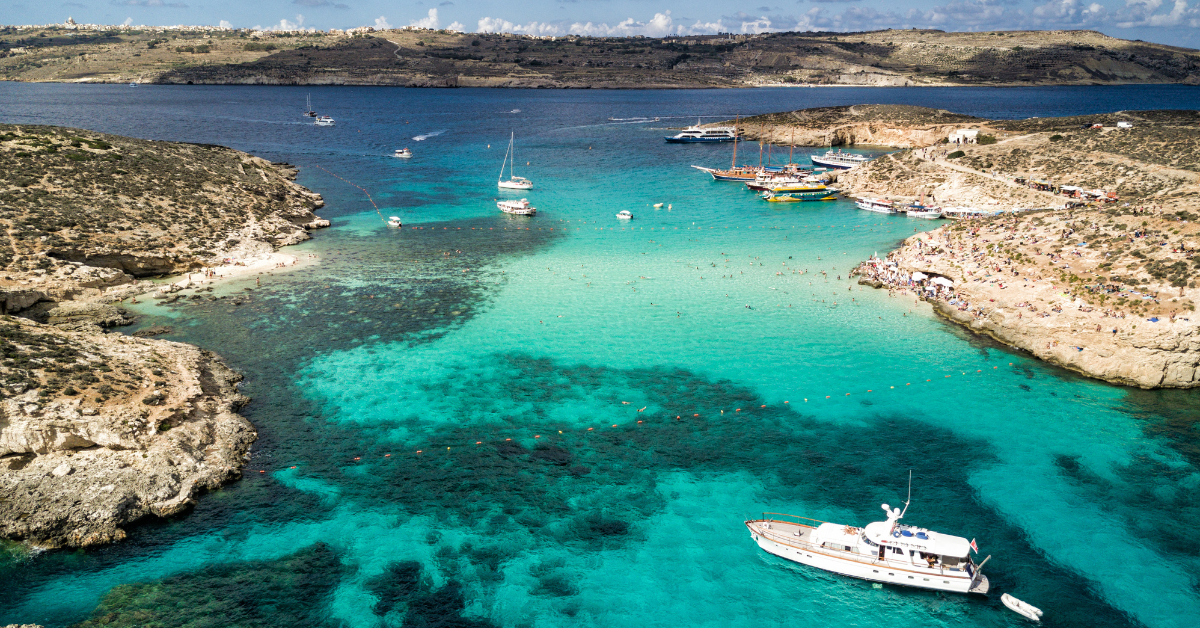Malta, a small island nation in the Mediterranean, is usually written in Katakana as “マルタ共和国” in Japanese. Yet, in older times, it was sometimes recorded using Kanji as “里荅烏文.” While this notation has no official status, it reflects a fascinating cultural practice of the past. Today, Japanese people associate Malta with beautiful seas, English study opportunities, and historic architecture, shaping a unique image of this country.
- The Background of Malta’s Kanji Notation
- The Image Japanese People Have of Malta
- Why Malta is Popular in Japan
- Malta’s Sports Culture and Japanese Interest
- The Appeal of Combining Study Abroad and Tourism
- Sports and Tourism Activities in Malta
- Malta’s Historical Background and Appeal
- Points Japanese Tourists Value
- Conclusion
The Background of Malta’s Kanji Notation
There is no official Kanji notation for Malta. However, during the Meiji to Showa periods, it was common practice in Japan to transcribe foreign place names phonetically into Kanji. In this process, “Malta” was once written as “里荅烏文.”
This was not a translation based on meaning but rather a phonetic transcription. For example, London was written as “倫敦.” Such usage made foreign names easier to read and understand at the time. Today, Katakana has become the standard, and these Kanji renderings remain only in historical documents.
The Image Japanese People Have of Malta
When Japanese people hear “Republic of Malta,” they often associate it with tourism or study abroad.
| Image held by Japanese people | Specific details |
|---|---|
| Blue sea and resorts | The Mediterranean’s crystal-clear waters and beautiful beaches |
| Popular study-abroad destination | English can be learned at relatively low cost |
| Historic architecture | The UNESCO World Heritage city of Valletta, ancient temples |
| Film and game settings | Famous as a filming location for historical and fantasy works |
| Mild climate | Pleasant weather suitable for year-round stays |
Through travel guides and study-abroad brochures, these ideas have become deeply rooted, making Malta an “aspirational destination” for many Japanese.
Why Malta is Popular in Japan
The popularity of Malta in Japan can be explained by several factors. First, it is known as an English study-abroad hub. English is one of its official languages, providing a strong learning environment, while living and tuition costs are lower than in London or New York.
Second, the appeal of tourism is undeniable. Attractions such as the Blue Grotto or Gozo Island offer breathtaking scenery. In addition, the fact that it is less crowded than major European destinations provides reassurance to Japanese travelers.
Malta’s Sports Culture and Japanese Interest
Sports are also an important part of Malta’s cultural identity. Football (soccer) is the most popular sport, with its own domestic league. While the national team has yet to achieve major international success, the passion of local fans leaves a lasting impression on visitors.
Malta is also a hub for marine sports. Diving, sailing, and yachting are especially popular. In particular, diving is world-renowned, with unique opportunities such as exploring shipwrecks beneath the sea.
Additionally, a traditional sport known as bocci (similar to bocce) is widely enjoyed. Played in stone-paved squares, it is also a way for tourists to engage with locals.
The Appeal of Combining Study Abroad and Tourism
Malta’s charm lies in the ability to combine study with leisure.
| Feature | Details |
|---|---|
| Learning environment | English is an official language; many language schools available |
| Affordable costs | Cheaper than studying in the UK or USA |
| Tourism opportunities | Sightseeing possible after classes |
| International exchange | Students from around the world gather here |
| Safety | Considered relatively safe for long-term stays |
For young Japanese in particular, Malta is seen as a country where one can “study while also enjoying travel.”
Sports and Tourism Activities in Malta
Tourists can enjoy a wide variety of sports and activities in Malta.
| Category | Examples of experiences |
|---|---|
| Marine sports | Diving, snorkeling, sailing |
| Field sports | Watching football matches, joining running events |
| Cultural experiences | Bocci, participating in local festivals |
| Adventure | Climbing, trekking |
| Relaxation | Beach yoga, spa experiences |
Thus, Malta is not just a sightseeing destination but rather a “country of experiences.”
Malta’s Historical Background and Appeal
Malta’s history runs deep, with archaeological sites dating back thousands of years. The megalithic temples are believed to be older than the Egyptian pyramids, giving them immense archaeological importance. In the Middle Ages, Malta became the base of the Knights of St. John, flourishing as a fortress city.
This depth of history leaves a strong impression on Japanese visitors. It positions Malta not merely as a beach resort, but as a “country where history and culture can be experienced firsthand.”
Points Japanese Tourists Value
Japanese tourists who visit Malta often highlight specific points that contribute to their satisfaction.
| Key point | Reason |
|---|---|
| Beautiful scenery | The Mediterranean’s blue seas and stone-built cityscapes |
| Warm people | Friendly and welcoming locals |
| Language study | Affordable opportunities to learn English |
| Safety | A relatively safe environment for travelers |
| Food culture | Cuisine influenced by Italian and Arab traditions |
These elements are often emphasized in travel surveys and help create repeat visitors from Japan.
Conclusion
There is no official Kanji notation for Malta, but the phonetic transcription “里荅烏文” was historically used. Today, the Katakana “マルタ共和国” is standard, yet this old notation remains a fascinating trace of cultural history.
For Japanese people, Malta is a country of beautiful seas, historic heritage, affordable English study, and opportunities for sports and marine activities. Though small, it offers a remarkable diversity of experiences.
Malta will continue to be an aspirational destination for Japanese travelers, students, and adventure seekers alike.






